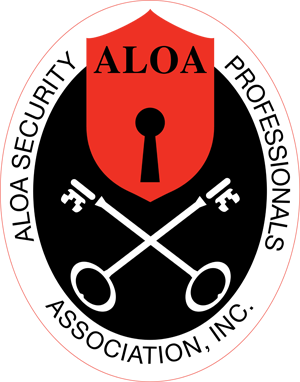
Master Key Systems
A master key system limits access to designated areas while allowing authorized persons to have access to all locks. An example of a basic master key system is the following: the owner has one key that works all the locks and the employees only have a key that works in the front door and not the office.
These systems can be as simple as the above example or more complex to designate access to departments, floors, etc. It is essential to exercise proper control over who has keys to what areas. Follow our suggested guidelines for key control.
Guidelines for Key Control
A key is worth more than its small purchase price. A key is worth everything that it allows access to (your information and property). Establishing a method for key control will provide...
» Authorization
» Accountability
» Loss prevention
Establish Records (Authorization)
1. Choose one person to be responsible for key distribution and authorization.
2. Establish a policy that all keys are company property and not personal property, that is loaned on a temporary basis for a day, week, month, or while employed by the company, and must be returned after this period.
3. Maintain permanent key control records that specify the following: the key number, door number, the person issued to, date issued/returned, deposit amount.
4. Keep these records in a safe or locked file cabinet.
5. To aid in record keeping, there is computer software available. Two options may be a database or a specific key control program.
Designate Keys (Accountability)
6. Have all keys properly labeled and identified by sequence number. This saves a great deal of time an prevents unlabeled and unidentified keys from stock piling in office drawers. However, to maintain security this number should not easily identify which door the key allows access to in case it is misplaced. For example, instead of the label "garage", use the label "A2" that can be cross referenced by the using the key records.
7. Keep all undistributed and/or returned keys in a key cabinet. A key cabinet is necessary for every business to help organize the keying systems.
8. To ensure that there is always a working key, never issue original keys. All original keys should be locked in a key cabinet. All copies should be made from originals.
9. Do not have excess copies of keys on hand. In some situations, extras keys are appropriate, but keep them to a minimum.
Emphasize Security (Loss Prevention)
10. If unauthorized duplications become a problem, speak with your professional locksmith about high security keying systems that are unique to the owner.
11. Never issue the master key to visiting service personnel, unfortunately they are rarely returned. The only exception would be a professional locksmith for the purposes of keying work.
12. Limit distribution of keys to high turnover and/or temporary positions. Issue a key only at the beginning of their shift, to be returned at the end of their shift.
13. Key audits should be conducted periodically to verify that no keys are lost.
Don't Forget Maintenance!
Don't force it - fix it! Every lock is designed to work smoothly. If it doesn't, there's probably a good reason. Fix it now or it will probably break at the worst possible moment.
Curt’s Lock & Key Service, Inc.1102 Main Ave
Fargo, ND 58103-1755


